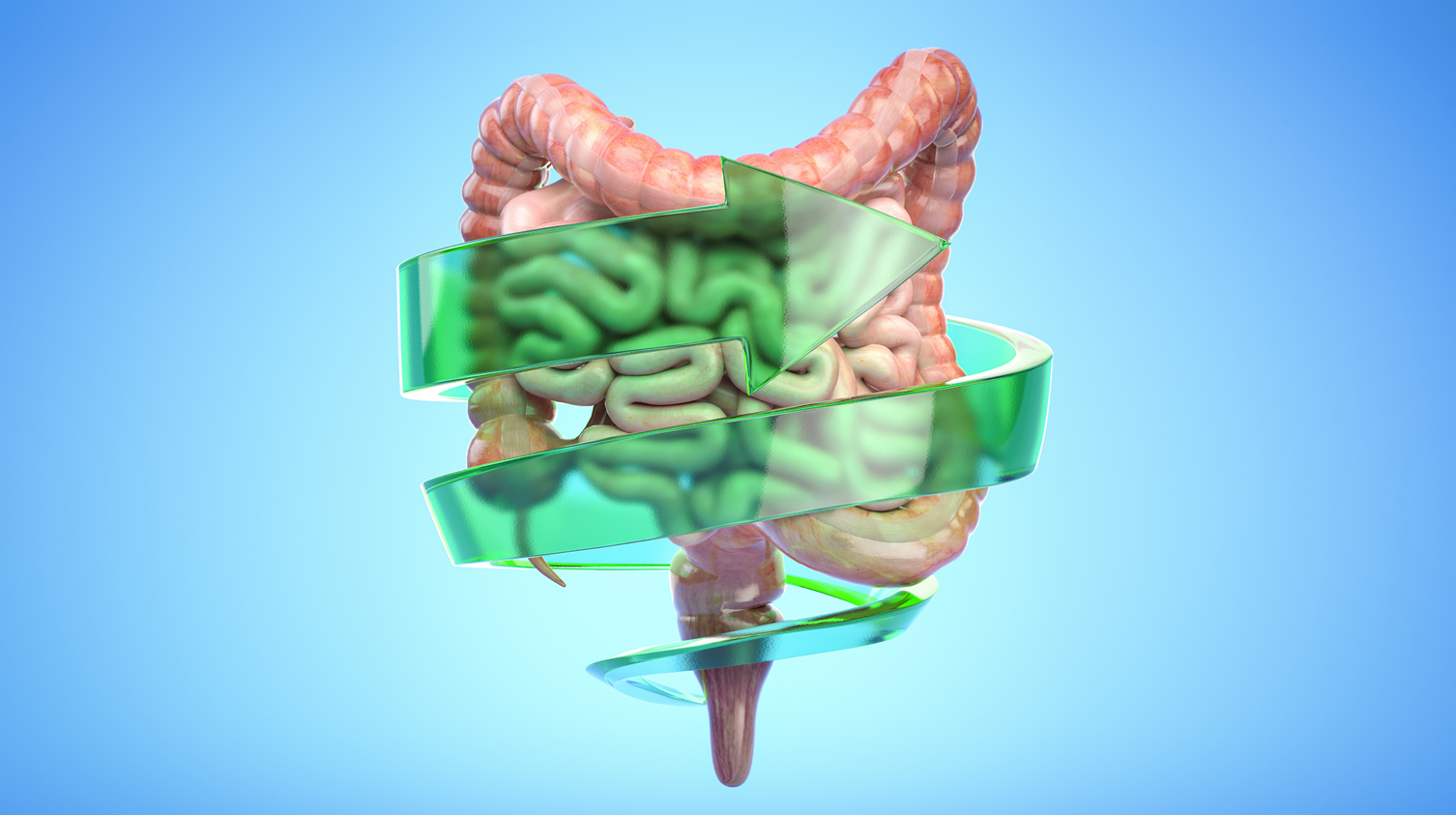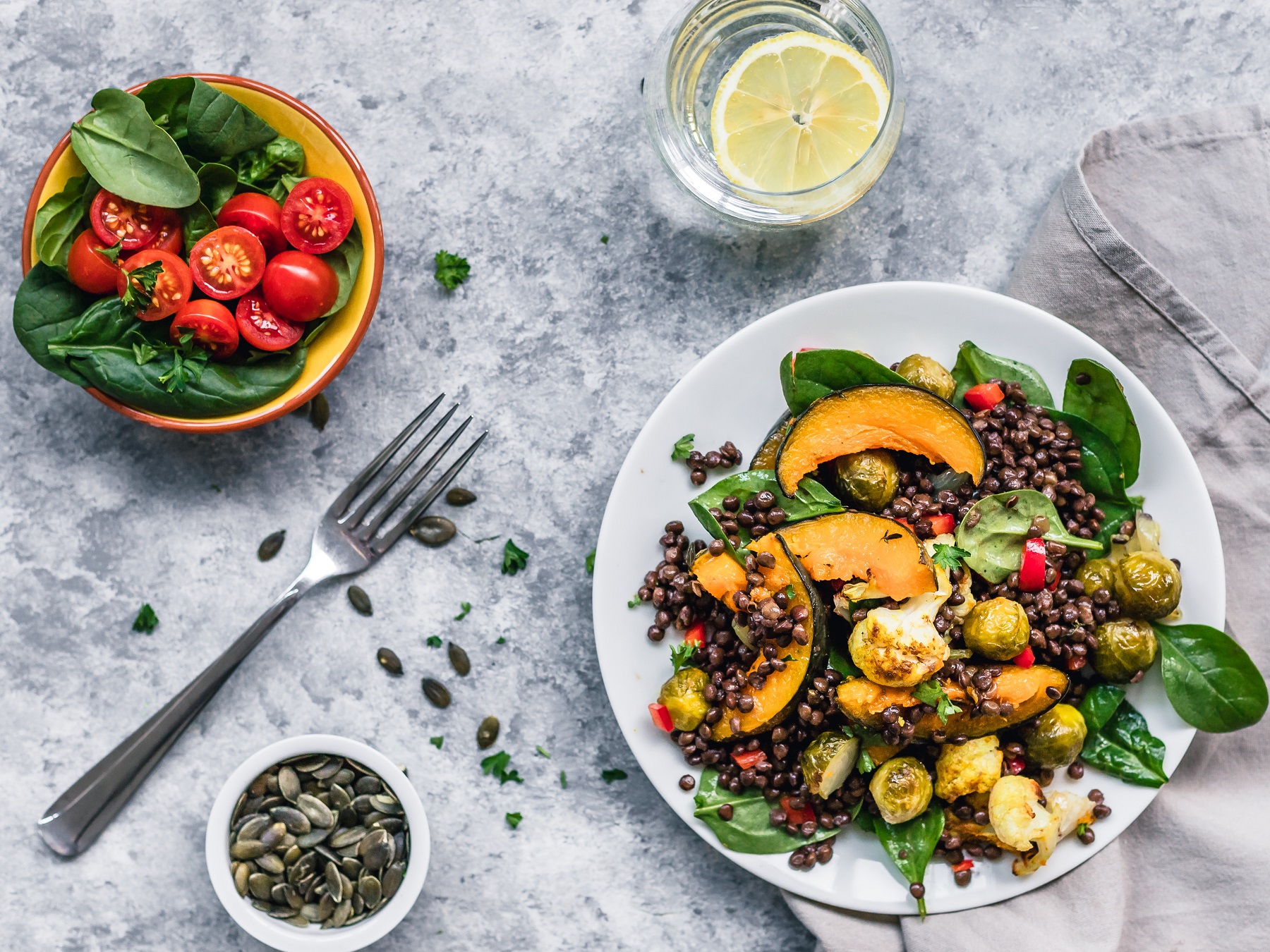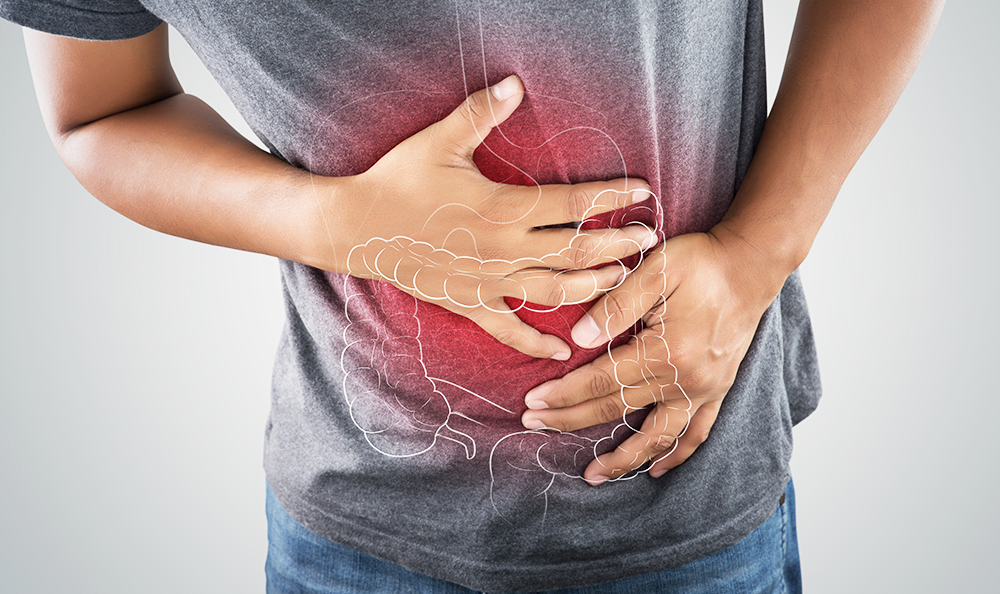
Deep inside your large intestine (at the bottom) is a community teeming with trillions of bacteria called your gut microbiome. Your gut microbiome contributes to many different areas of health, and it is important to understand what roles your gut bacteria play and how they produce important substances for your health. One of your gut bacteria’s ‘superpower’ substances is butyrate – a short chain fatty acid (SCFA).
What is butyrate?
Butyrate is a short-chain fatty acid (SCFA) produced by some types of gut bacteria when they break down or digest fibre. Fibre is found in plant-based foods and is largely indigestible, meaning humans do not have the enzymes to digest and absorb fibre, thus it passes through to the colon or large bowel. In your colon, the fibre is fermented by your gut bacteria to produce SCFAs.
The key to a gut-friendly diet is eating foods known as prebiotics. Prebiotics include types of dietary fibre that act as a fuel source for health-promoting gut bacteria that produce beneficial substances like SCFAs. Besides butyrate, other SCFAs produced in the gut include acetate and propionate, and while all SCFAs have scientifically proven health benefits1, butyrate is the most well-researched.

Why are prebiotics important for your gut health? Learn more.
Why is butyrate so important?
Butyrate supports your gut health and may also provide protection against some inflammation-based diseases. The “superpower” qualities of butyrate include:
- Maintaining our gut barrier by feeding our gut cells2
- Suppressing inflammation in the gut3,4
- Boosting the immune system’s defence against disease-causing bacteria5
- Reducing appetite6 which can help maintain a healthy body weight
- Maintaining blood sugar (glucose) levels7 which can help reduce diabetes risk.
Not surprisingly, reduced butyrate levels (and/or reduced bacterial ability to degrade fibre) has been associated with inflammatory bowel disease8-11, colon cancer12,13 and insulin resistance14-16.
What contributes to low butyrate levels?
Low microbial diversity can result in a reduced potential to produce butyrate. A less diverse microbiome may lack the bacteria capable of producing adequate butyrate levels. Diversity can be improved by eating a varied intake of prebiotic fibre sources which can then fuel a diverse number of butyrate-producing bacteria. Specific types of prebiotic fibres known as resistant starch and pectin have demonstrated the ability to increase butyrate levels17,18. Insufficient butyrate production by the gut microbiome could contribute to gastrointestinal, immune or metabolic issues as stated above.

Microbial diversity can improve gut health. Read the blog.
What can you do to increase butyrate?
The best way to supercharge your gut microbiome to produce butyrate is to eat a high-fibre diet, that includes sufficient sources of resistant starch and pectin. This means eating a diet rich in plant-based foods such as wholegrains, vegetables, fruits, nuts/seeds and legumes. You can also increase the resistant starch content of foods such as potato, pasta and rice by cooking and then cooling them overnight for use in salads.
Below is a meal plan bursting with prebiotics that can boost your butyrate-producing potential. Resistant starch sources are in green and pectin sources are in blue.
Breakfast: Rolled oats with berries – cooked or raw, make room for rolled oats at brekky. Raw oats can be topped with a low-fat smoothie made with strawberries, raspberries and blueberries or added fresh to your porridge.
Lunch: Mediterranean pasta salad – bring your plate alive with colour. Toss together some cooked and cooled pasta leftovers with roasted sweet potato, zucchini, eggplant and cherry tomatoes in a few teaspoons of pesto.
Dinner: Lentil and mince cottage pie – try replacing half the beef mince in your traditional cottage pie with lentils and adding vegetables like onion, carrot, peas and corn as well as the usual canned tomato/passata and herbs. Top with mashed potato and bake. Serve with steamed green beans, cauliflower, and broccoli for an additional prebiotic punch!
Hint: boil additional potatoes to keep in the fridge for potato salads (skin on), also do this with pasta when making your spaghetti bolognese!
Snacks: don’t forget your snacks to boost prebiotic intake between meals and help increase butyrate production. Go for hummus and carrot sticks, or try pectin containing fruit such as a kiwi or orange.
This microbiome test is not intended to be used to diagnose or treat medical conditions. A full disclaimer is available here
References
Chambers ES, Preston T, Frost G, Morrison DJ. (2018)..
Role of Gut Microbiota-Generated Short-Chain Fatty Acids in Metabolic and Cardiovascular Health. .
Curr Nutr Rep. 7(4), 198-206.
Roediger, W. E. (1980)..
Role of anaerobic bacteria in the metabolic welfare of the colonic mucosa in man. .
Gut 21, 793–798.
Kaisar, M. M. M., Pelgrom, L. R., van der Ham, A. J., Yazdanbakhsh, M. & Everts, B. (2017)..
Butyrate Conditions Human Dendritic Cells to Prime Type 1 Regulatory T Cells via both Histone Deacetylase Inhibition and G Protein-Coupled Receptor 109A Signaling. Front. .
Immunol. 8, 1429.
Singh, N. et al. (2014)..
Activation of Gpr109a, Receptor for Niacin and the Commensal Metabolite Butyrate, Suppresses Colonic Inflammation and Carcinogenesis. .
Immunity 40, 128–139.
Schulthess et al., (2019)..
The Short Chain Fatty Acid Butyrate Imprints an Antimicrobial Program Macrophages. .
Immunity 50, 432–445.
Inoue, D., Tsujimoto, G. & Kimura, I. (2014)..
Inoue, D., Tsujimoto, G. & Kimura, I. Regulation of Energy Homeostasis by GPR41. Front. .
Endocrinol. 5, 81–81.
De Vadder, F. et al. (2014)..
Microbiota-Generated Metabolites Promote Metabolic Benefits via Gut-Brain Neural Circuits. .
Cell 156, 84-96.
Vich Vila, A. et al. (2018)..
Gut microbiota composition and functional changes in inflammatory bowel disease and irritable bowel syndrome. .
Sci. Transl. Med. 10, eaap8914.
Laserna-Mendieta, E. J. et al. (2018)..
Determinants of Reduced Genetic Capacity for Butyrate Synthesis by the Gut Microbiome in Crohn’s Disease and Ulcerative Colitis. .
J. Crohns Colitis 12, 204–216.
Marchesi, J. R. et al. (2007)..
Marchesi, J. R. et al. Rapid and Noninvasive Metabonomic Characterization of Inflammatory Bowel Disease. .
J. Proteome Res. 6, 546–551.
He, Q. et al. (2017)..
Two distinct metacommunities characterize the gut microbiota in Crohn’s disease patients. .
GigaScience 6, 1–11.
Feng, Q. et al. (2015)..
Gut microbiome development along the colorectal adenoma–carcinoma sequence. .
Nat. Commun. 6, 6528.


